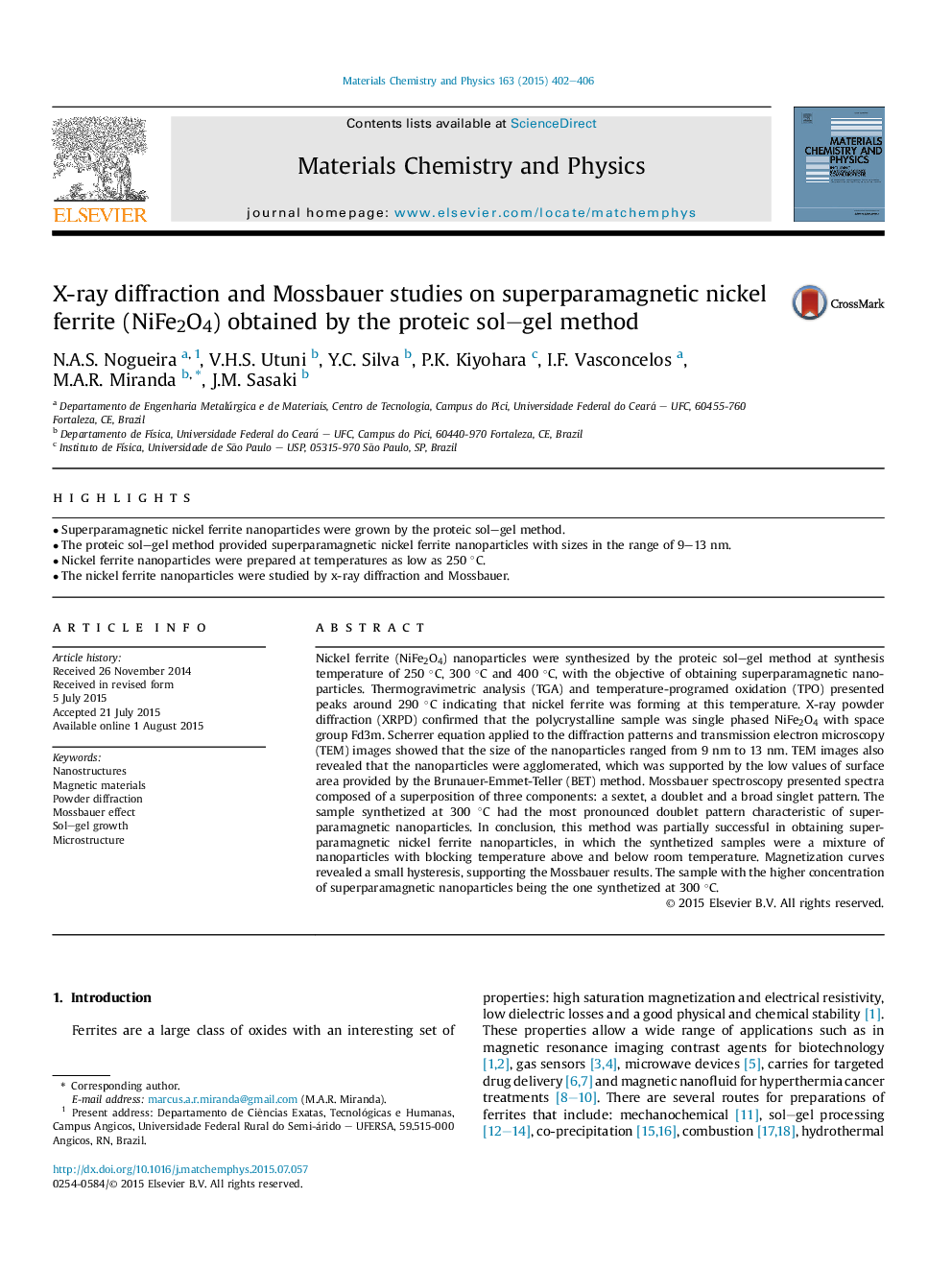| کد مقاله | کد نشریه | سال انتشار | مقاله انگلیسی | نسخه تمام متن |
|---|---|---|---|---|
| 1521095 | 1511800 | 2015 | 5 صفحه PDF | دانلود رایگان |

• Superparamagnetic nickel ferrite nanoparticles were grown by the proteic sol–gel method.
• The proteic sol–gel method provided superparamagnetic nickel ferrite nanoparticles with sizes in the range of 9–13 nm.
• Nickel ferrite nanoparticles were prepared at temperatures as low as 250 °C.
• The nickel ferrite nanoparticles were studied by x-ray diffraction and Mossbauer.
Nickel ferrite (NiFe2O4) nanoparticles were synthesized by the proteic sol–gel method at synthesis temperature of 250 °C, 300 °C and 400 °C, with the objective of obtaining superparamagnetic nanoparticles. Thermogravimetric analysis (TGA) and temperature-programed oxidation (TPO) presented peaks around 290 °C indicating that nickel ferrite was forming at this temperature. X-ray powder diffraction (XRPD) confirmed that the polycrystalline sample was single phased NiFe2O4 with space group Fd3m. Scherrer equation applied to the diffraction patterns and transmission electron microscopy (TEM) images showed that the size of the nanoparticles ranged from 9 nm to 13 nm. TEM images also revealed that the nanoparticles were agglomerated, which was supported by the low values of surface area provided by the Brunauer-Emmet-Teller (BET) method. Mossbauer spectroscopy presented spectra composed of a superposition of three components: a sextet, a doublet and a broad singlet pattern. The sample synthetized at 300 °C had the most pronounced doublet pattern characteristic of superparamagnetic nanoparticles. In conclusion, this method was partially successful in obtaining superparamagnetic nickel ferrite nanoparticles, in which the synthetized samples were a mixture of nanoparticles with blocking temperature above and below room temperature. Magnetization curves revealed a small hysteresis, supporting the Mossbauer results. The sample with the higher concentration of superparamagnetic nanoparticles being the one synthetized at 300 °C.
Journal: Materials Chemistry and Physics - Volume 163, 1 August 2015, Pages 402–406